Movies - Smurfs: Creation, Evolution and Representations through Toys, Videogames, Series and Films
By Mulder, 06 february 2025
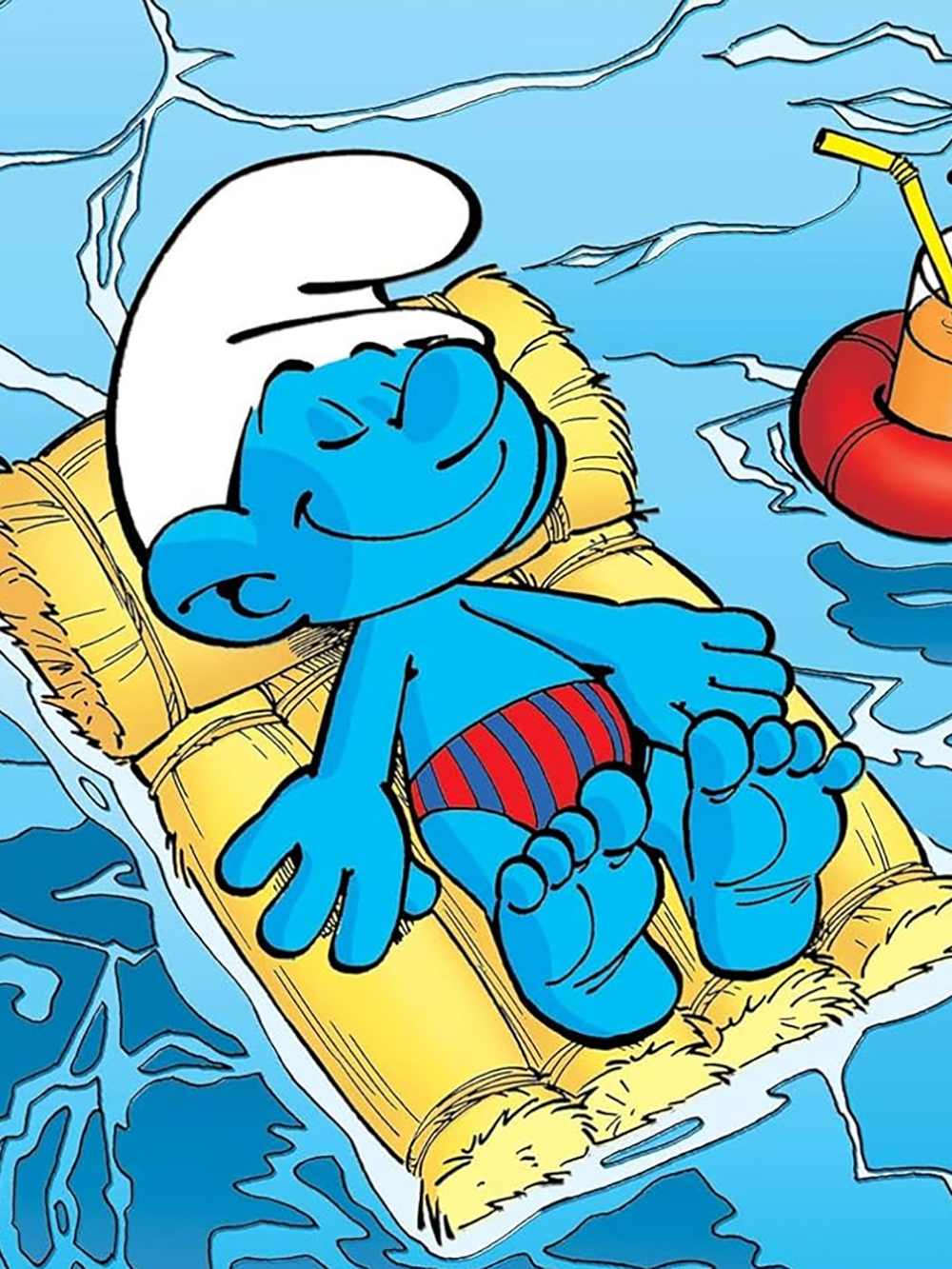
The Smurfs, iconic little blue creatures at the heart of a rich and colorful universe, have spanned more than six decades of popular history, becoming a global cultural phenomenon. Created by Belgian cartoonist Peyo, their journey from comic strip to export in derivative products, films, series and video games is a perfect illustration of how a fictional character can become an icon, transcending the boundaries of paper to settle into the daily lives of fans of all ages and nationalities.
The story of the Smurfs begins at a time of great excitement in the Belgian comics world. Peyo, a talented young Belgian cartoonist, worked for the Spirou newspaper in the 1950s. He created the Johan et Pirlouit series, about the adventures of a knight and his squire in a medieval fantasy world. It was in the context of this series that the idea of Smurfs first took shape. The Smurfs concept was born accidentally. At lunch with a friend, Peyo was looking for the word salt, but inadvertently used the word smurf. The absurdity of the term appealed to him, and he decided to use it as the name for his little creatures. They first appeared in La Flûte à six Smurfs, a Johan et Pirlouit album released in 1958. At the time, the Smurfs were still only secondary characters, with little depth, living on the bangs of the main story.
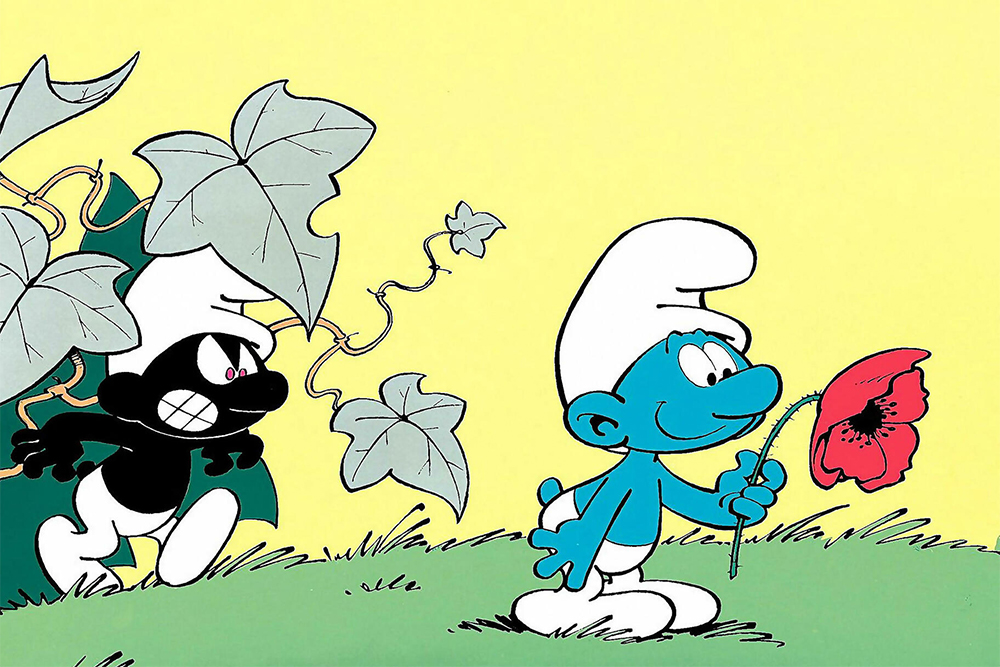
However, these creatures, though small and unassuming, struck a chord with their shape and personality. Peyo soon decided to give them their own space and develop their own universe. He imagined a secret village, hidden in a forest, populated exclusively by these blue creatures. They live in harmony, under the guidance of a wise and benevolent leader, Papa Smurf, and are defined by very distinct characteristics: each Smurf has a unique personality, a specific function within society, giving them a touch of originality and charm. The name of each Smurf is also often a key to understanding their role, such as Papa Smurf, Clumsy Smurf or Greedy Smurf. However, this peaceful little village is regularly disrupted by the story's antagonist, Gargamel, an evil sorcerer, and his cat Azraël. The relationship between the Smurfs and Gargamel has evolved over the years into an archetype of the struggle between good and evil, as well as a reflection on the opposition between wisdom and brutality, harmony and chaos.

The Smurfs universe, already rich and vast in comics, underwent exponential expansion from the 1980s onwards, with the adaptation into TV series. In 1981, the American company Hanna-Barbera, known for such hits as The Flintstones and Yogi Bear, produced a cartoon based on the Smurfs. This cartoon, broadcast in the U.S. and around the world, marked a turning point in the history of the franchise. The animated series introduces many additional characters, deepens the stories and presents the Smurfs in a variety of situations, from epic adventures to everyday moments. Each episode plunges us into a world where the Smurfs embody strong values: solidarity, teamwork and mutual aid. As the seasons progress, recurring elements such as the Smurfs' unbreakable friendship and their adversity against Gargamel reinforce the dynamic of good versus evil. The impact of this TV series is immense. It introduced the Smurfs to an even wider audience, especially the children of the 1980s and 1990s, who discovered these little creatures on television. The series credits, sung to the tune of a catchy melody, are a symbol of that era and a source of nostalgia for those who lived through it. The series also helped to make Smurfs a fixture of late-20th-century popular culture, paving the way for further exploitation in derivative products.

The success of Smurfs on TV led to film adaptations. The Smurfs' first foray into 3D cinema came in 2011 with The Smurfs, an animated live-action film directed by Raja Gosnell. The film blends live-action and animation to bring the Smurfs to life in the human world, where they accidentally end up in New York. The film's originality lies in its ability to merge the two worlds, that of the Smurfs and that of the humans, while retaining the key elements of the franchise: innocent humor, team spirit and the fight against the forces of evil. The film was a box-office success, leading to the production of a sequel, Les Smurfs 2 (2013), which continues the Smurfs' adventures in the human world, while introducing new characters and deepening the relationships between the protagonists. These films, while receiving mixed reviews, enabled the Smurfs to reach a new generation of children, while reminding old fans of the spirit of the characters they knew. The commercial success of the films also enabled the franchise to be extended and new formats explored, such as animated spin-off series, available on platforms like Netflix.
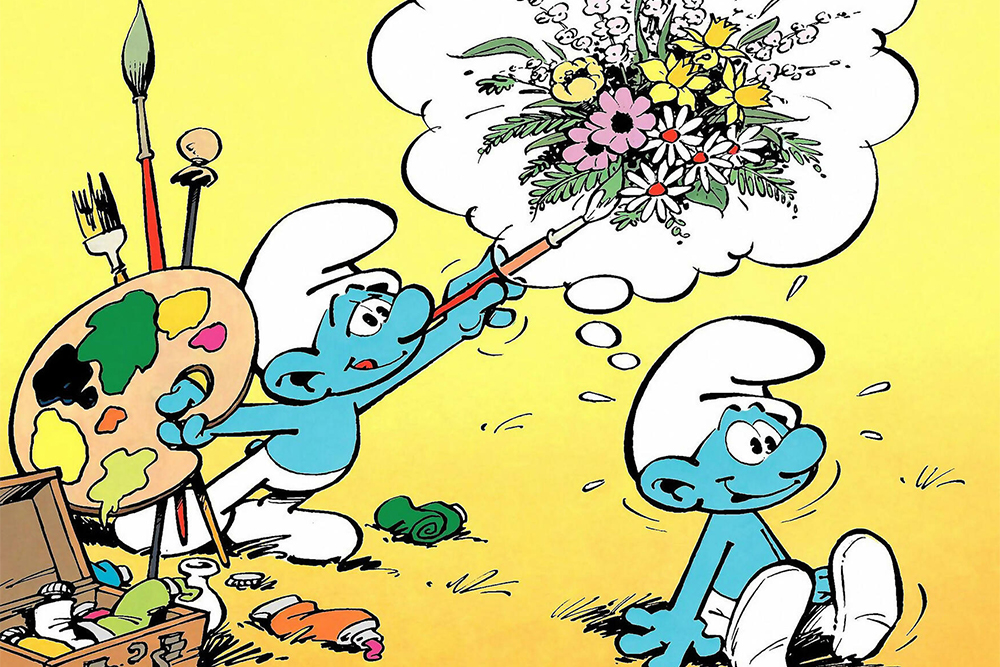
The commercial aspect of the Smurfs, while essential to their success, should not overshadow the phenomenal impact they have had in the toy and merchandising sector. As early as the 1960s, Smurfs appeared in the form of plastic figurines produced by the German company Schleich. These small, distinctively designed figurines quickly became collectors' items, and their popularity grew over the decades. Smurfs come in a multitude of versions, representing different characters, clothes, expressions and accessories. These Smurfs figurines have become must-haves for children and adult collectors alike. Even today, the Schleich company continues to produce new limited-edition figurines, attesting to the popularity of these little creatures. But Smurfs are not limited to figurines. They can be found in an infinite range of products: plush toys, clothing, school supplies, kitchenware, video games and even breakfast cereals. Smurfs have thus become an integral part of global consumer culture, and their presence in homes, stores and advertising testifies to the franchise's importance in children's daily lives.
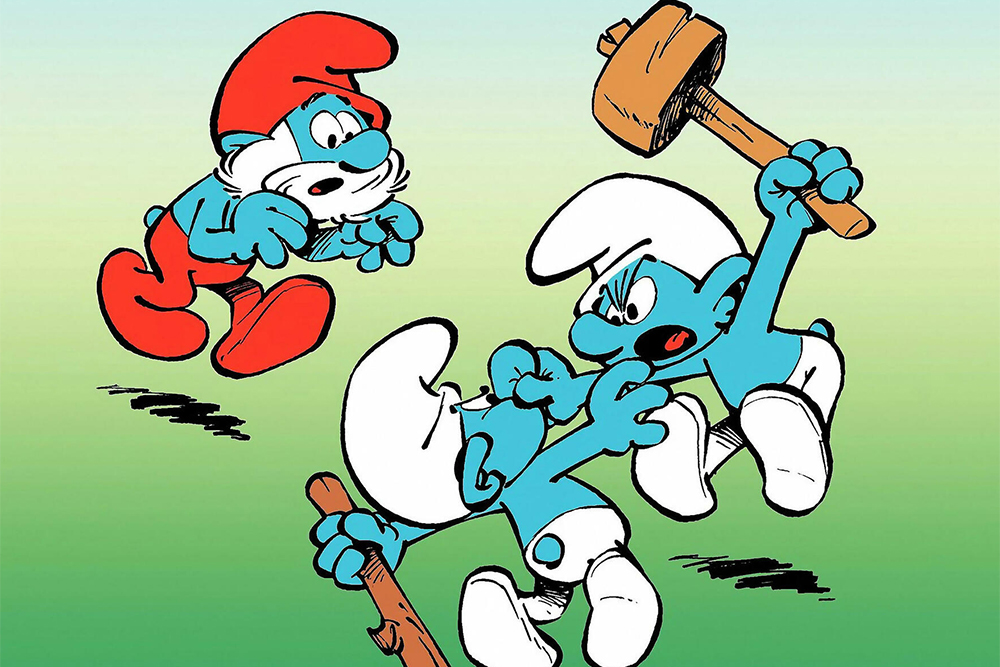
Smurfs are more than just fictional characters. Through their story, they embody values and ideals that resonate deeply in the collective unconscious. One of the most fascinating aspects of the Smurfs universe is its ability to mirror the social and political concerns of its time. In their hidden, utopian village, the Smurfs live in a society based on cooperation and fairness, far removed from the conflicts that characterize the outside world. This vision of an ideal, communitarian society has, in some cases, been interpreted as an allusion to more egalitarian social models, or even reflections on collectivist societies. In this sense, the Smurfs are seen not only as fictional heroes, but also as symbols of social harmony. Moreover, the constant struggle against Gargamel, who represents the external threat, can be seen as an allegory of resistance to the forces of domination. In an ever-changing world, the Smurfs are a model of resilience and self-sufficiency.

As the Smurfs continue to remain at the forefront of the entertainment industry, it's fascinating to see how this franchise continues to transform and adapt to new realities. The future of Smurfs still looks bright, with projects continually in development, including on streaming platforms like Netflix, and new toy collections regularly released. The multi-generational aspect of Smurfs, which manage to capture the imagination of young children while satisfying nostalgic fans of past generations, guarantees their longevity and cultural relevance. These little blue creatures will undoubtedly continue to be a mainstay of popular culture for years to come.
The Smurfs, born of a simple but brilliant idea by Peyo in the 1950s, have evolved far beyond the realm of comic strips. Their presence in popular culture is the result of a continuous transformation, through television, cinema, toys and merchandising. They have become a worldwide franchise, symbolizing universal values such as solidarity, friendship and mutual aid. More than just a commercial phenomenon, the Smurfs are deeply rooted in collective culture, their heritage constantly renewing itself while remaining true to its roots.
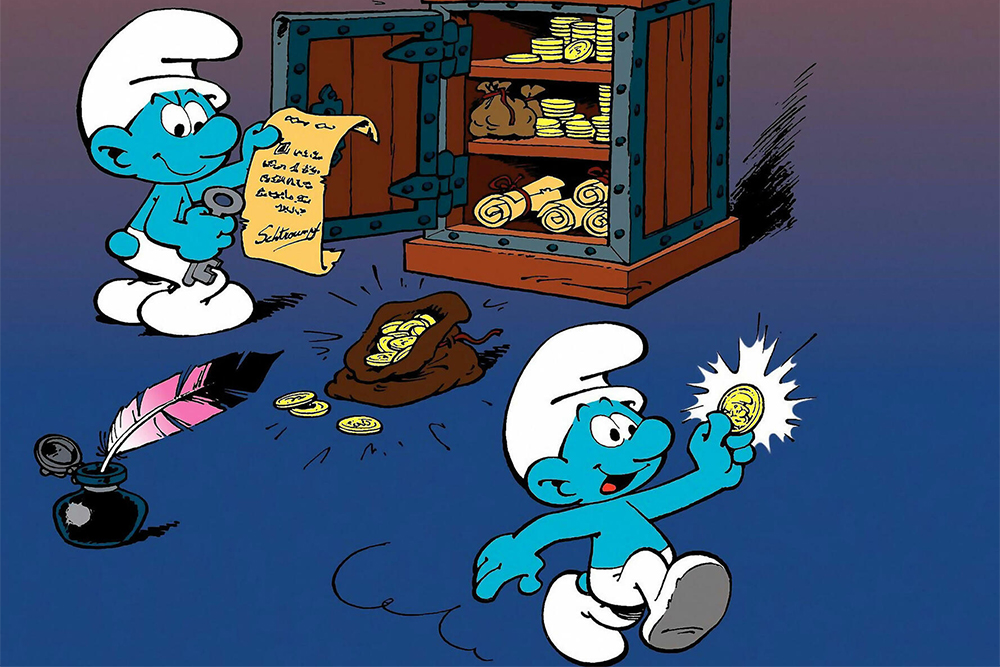
Comic strips
1959 - The Black Smurfs (Peyo)
1963 - The Smurf King (Peyo, Yvan Delporte)
1965 - The Smurfs and the Magic Flute (Peyo)
1967 - The Smurf Apprentice (Peyo, Yvan Delporte)
1970 - Smurf Soup (Peyo, Yvan Delporte)
1972 - The Astrosmurf (Peyo, Yvan Delporte)
1973 - The Smurfs and the Egg (Peyo, Yvan Delporte)
1974 - The False Smurf (Peyo, Yvan Delporte)
1976 - The Hundredth Smurf (Peyo, Yvan Delporte)
1978 - The Smurf Olympics (Peyo, Yvan Delporte)
1982 - The Smurfs and the Howlibird (Peyo)
1983 - Gargamel and the Smurfs (Peyo)
1987 - The Baby Smurf (Peyo)
1988 - The Finance Smurf (Peyo)
1990 - The Reporter Smurf (Peyo)
1992 - The Schtroumpf and His Dragon (Peyo)
1993 - Doctor Smurf (Peyo)
1994 - The Wild Smurf (Peyo)
2000 - The Secret of the Smurfs (Alain Jost, Thierry Culliford)
2002 - The Smurfs Play With Fire (Alain Jost, Thierry Culliford)
2003 - The Smurfs and the Golden Tree (Alain Jost, Thierry Culliford)
2005 - The School of Little Ghosts (Alain Jost, Thierry Culliford)
2008 - The Smurfs and the Malfeasance (Alain Jost, Thierry Culliford)
2009 - The Smurfs and the Half Smurf (Alain Jost, Thierry Culliford)
2010 - The Smurf Who Was Afraid of the Dark (Alain Jost, Thierry Culliford)
2011 - The Smurfs and the Volcano (Alain Jost, Thierry Culliford)
2013 - The Smurfs and the Love Storm (Alain Jost, Thierry Culliford)
2015 - The Smurf and His Twin (Alain Jost, Thierry Culliford)
2017 - The Smurfs and the Water Lily (Alain Jost, Thierry Culliford)
2019 - The Smurfs and the Green Menace (Alain Jost, Thierry Culliford)
2020 - The Smurfs and the Purple Plague (Alain Jost, Thierry Culliford)
The series
1961-1967 – The Smurfs (TVA Dupuis, Animation by Eddy Ryssack)
1981-1989 -The Smurfs (Hanna-Barbera Productions, SEPP International S.A.)
2021 - present - The Smurfs (Dupuis Édition & Audiovisuel, Peyo Productions, IMPS Brussels, Dargaud Media (seasons 1-2), Ellipsanime Productions (season 3))
The movies
1965 - Les Aventures des Schtroumpfs Directed by Eddy Ryssack, Maurice Rosy (Dupuis Animation)
1976 - The Smurfs and the Magic Flute Directed by José Dutillieu (Belvision Studios)
2011 - The Smurfs Directed by Raja Gosnell (Columbia Pictures, Sony Pictures Animation)
2011 - The Smurfs: A Christmas Carol Directed by Troy Quane (Sony Pictures Animation)
2013 - The Smurfs 2 Directed by Raja Gosnell (Columbia Pictures, Sony Pictures Animation)
2013 - The Smurfs: Legend of the Headless Horseman Directed by Stephan Franck (Sony Pictures Animation)
2017 - The Smurfs and the Lost Village Directed by Kelly Asbury (Sony Pictures Animation)
Video games
1982 - The Smurfs (ColecoVision, Atari 2600) (Coleco)
1982 - The Smurfs at Gargamel's castle (ColecoVision) (Coleco)
1994 - The Smurfs (Super Nintendo, Mega Drive, Game Boy) (Infogrames)
1995 - Le Téléportaschtroumpf (PC, CD-i) (Infogrames)
1996 - Smurfs around the world (Super Nintendo, Mega Drive, Game Boy) (Infogrames)
1997 - The Smurfs' Nightmare (Game Boy, Game Boy Color) (Infogrames)
1999 - The Smurfs (PlayStation) (Infogrames)
2000 - Les Smurfs à la fête foraine (Game Boy Color) (Infogrames )
2000 - Mission of the Smurfs (Game Boy Color) (Infogrames)
2001 - The Smurfs: Sea Rescue (PlayStation) (Infogrames)
2002 - Revenge of the Smurfs (Game Boy Advance) (Infogrames)
2010 - The Smurfs Village (iOS, Android) (Capcom Mobile)
2011 - The Smurfs (Nintendo DS) (Ubisoft)
2011 - The Smurfs: Dance Party (Wii) (Ubisoft)
2013 - The Smurfs 2 (PlayStation 3, Xbox 360, Wii, Wii U, Nintendo DS) (Ubisoft)
2015 - The Smurfs: Epic Run (iOS, Android) (Ubisoft)
2021 - Smurfs: Mission Malfeuille (PlayStation 4, Xbox One, Nintendo Switch, PC) (OSome Studio)
2022 - Smurfs Kart (Nintendo Switch) (Eden Games)
2024 - Smurfs: Epic of Dreams (PlayStation 5, PlayStation 4, Xbox Series X/S, Xbox One, Nintendo Switch, PC) (Ocellus Studio)

